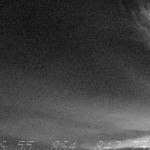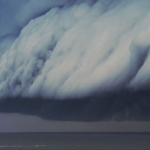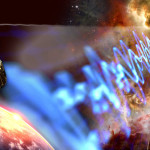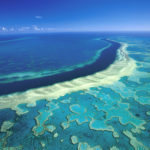Amazing Scary Lightning Storm Hits Queensland Australia
An amazing yet scary sight lit up the Australian summer skies with a huge lightning show that lasted for hours.
Its was caught on video and photos by many locals and vacationers around Yarrabilba, and the surrounding area of south Queensland.
Over 28,000 lighting strikes were reported in the area.
This type of slow moving branching out lightning is know as downward leader formation lightning. It appears to travel and creep very slowly in the sky, staying lit the entire time, lasting several seconds.
In a process not well understood, a channel of ionized air, called a “leader”, is initiated from a charged region in the thundercloud. Leaders are electrically conductive channels of partially ionized gas that travel away from a region of dense charge. Negative leaders propagate away from densely charged regions of negative charge, and positive leaders propagate from positively charged regions.
The positively and negatively charged leaders proceed in opposite directions, positive upwards within the cloud and negative towards the earth. Both ionic channels proceed, in their respective directions, in a number of successive spurts. Each leader “pools” ions at the leading tips, shooting out one or more new leaders, momentarily pooling again to concentrate charged ions, then shooting out another leader.
Leaders often split, forming branches in a tree-like pattern.In addition, negative leaders travel in a discontinuous fashion. The resulting jerky movement of these “stepped leader(s)” can be readily observed in slow-motion videos of negative leaders as they head toward ground prior to a negative CG lightning strike. The negative leaders continue to propagate and split as they head downward, often speeding up as they get closer to the Earth’s surface.
About 90% of ionic channel lengths between “pools” are approximately 45 m (148 ft) in length. The establishment of the ionic channel takes a comparatively long amount of time (hundreds of milliseconds) in comparison to resulting discharge which occurs within a few microseconds. The electric current needed to establish the channel, measured in the tens or hundreds of amperes, is dwarfed by subsequent currents during the actual discharge.
Initiation of the outward leaders is not well understood. The electric field strength within the thundercloud is not typically large enough to initiate this process by itself.Many hypotheses have been proposed. One theory postulates that showers of relativistic electrons are created by cosmic rays and are then accelerated to higher velocities via a process called runaway breakdown. As these relativistic electrons collide and ionize neutral air molecules, they initiate leader formation. Another theory invokes locally enhanced electric fields being formed near elongated water droplets or ice crystals. Percolation theory, especially for the case of biased percolation, describes random connectivity phenomena, which produce an evolution of connected structures similar to that of lightning strikes.
Lightning captured at Yarrabilba #bnestorm @612brisbane @SpencerHowson pic.twitter.com/aBDNatKj0P
— Mick Wagener (@shm1ck_) November 23, 2015






